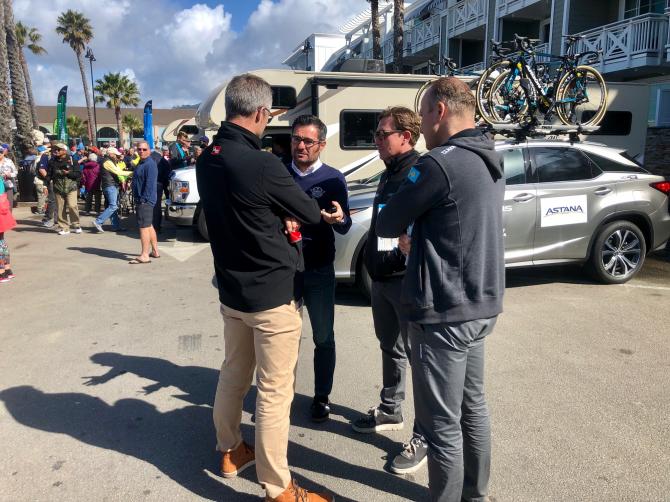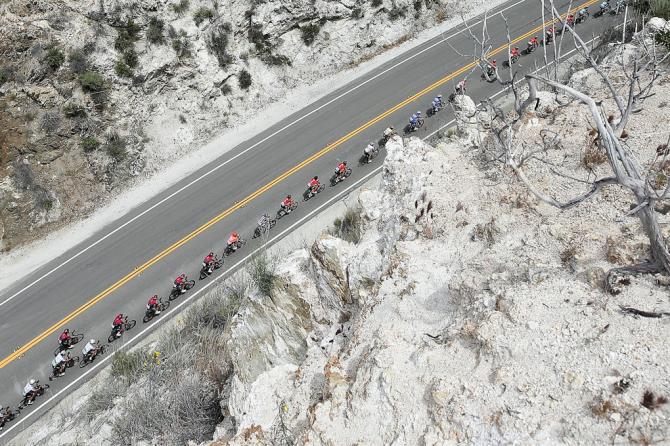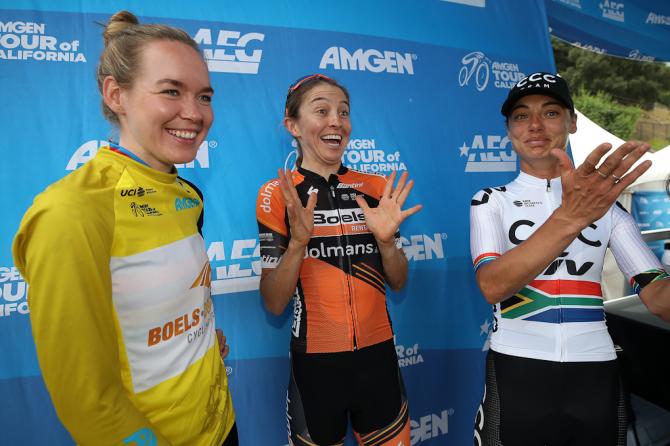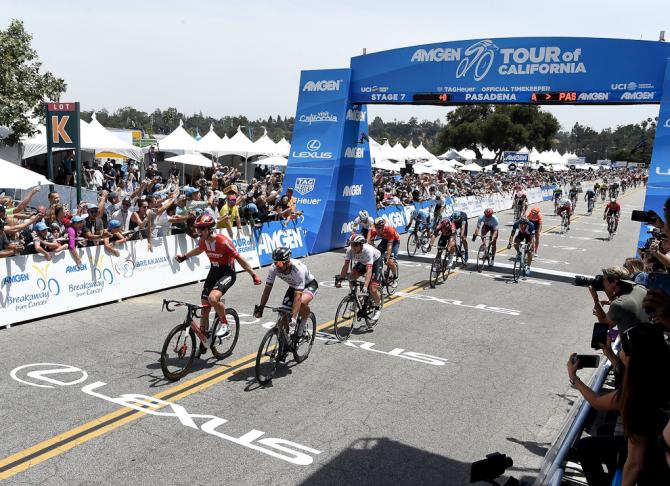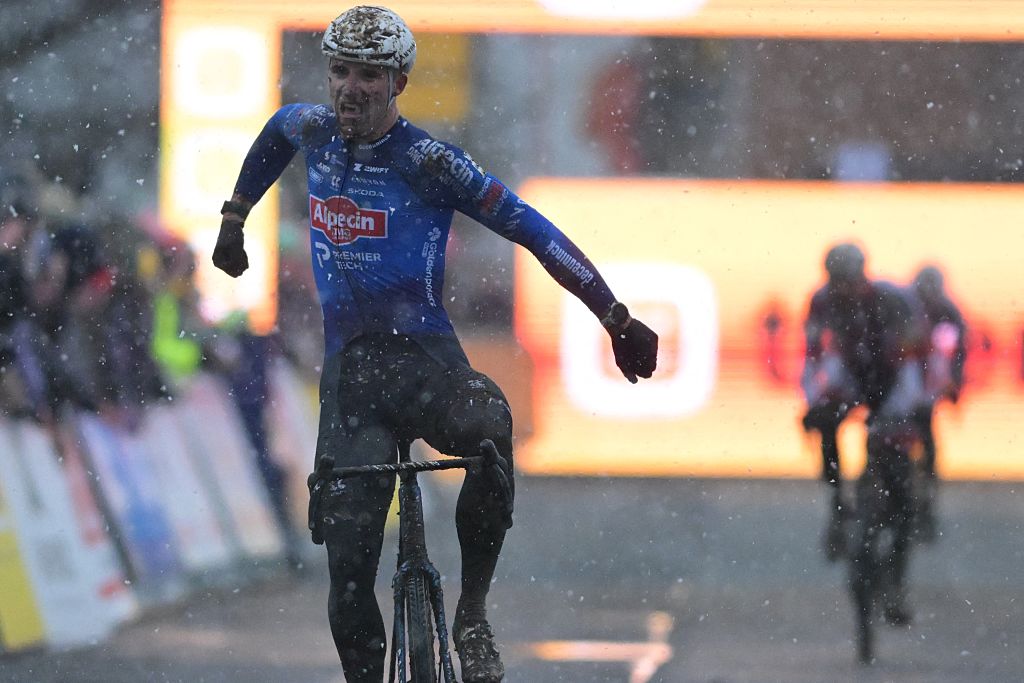Tour of California: 8 conclusions from the men's and women's races
Youth rises, rule confusion, Cavendish, and equality
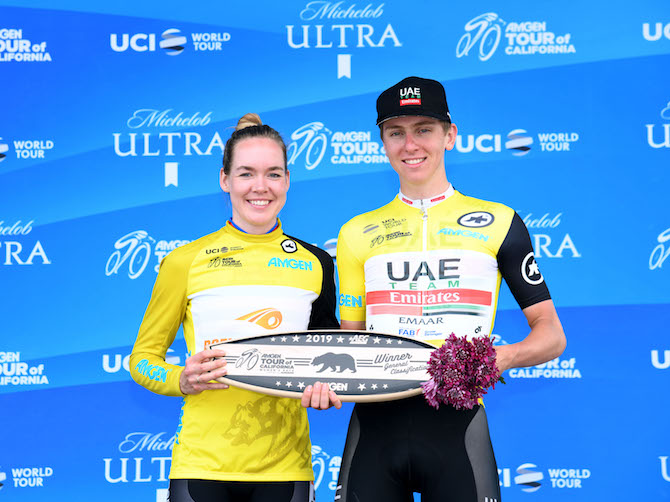
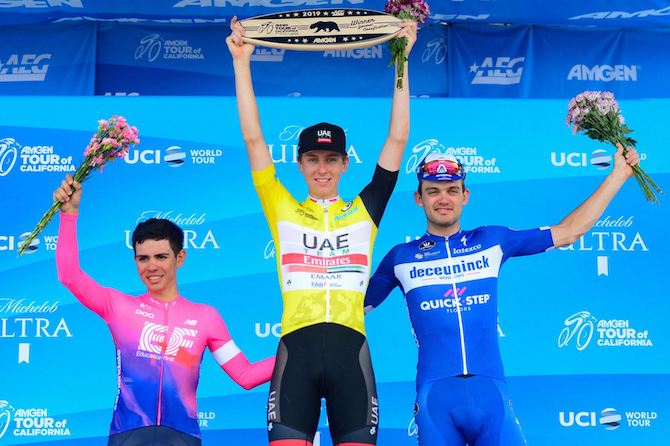
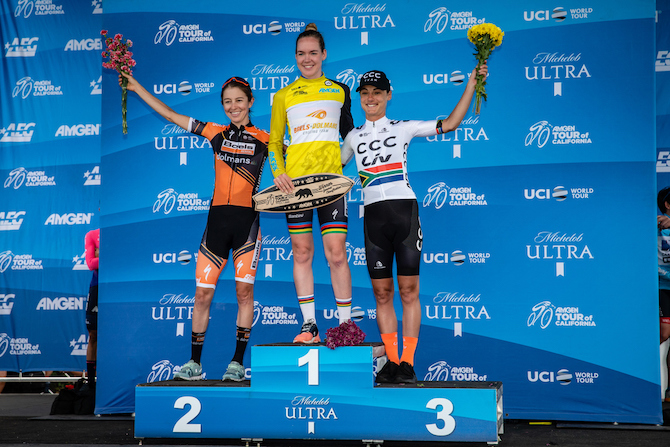
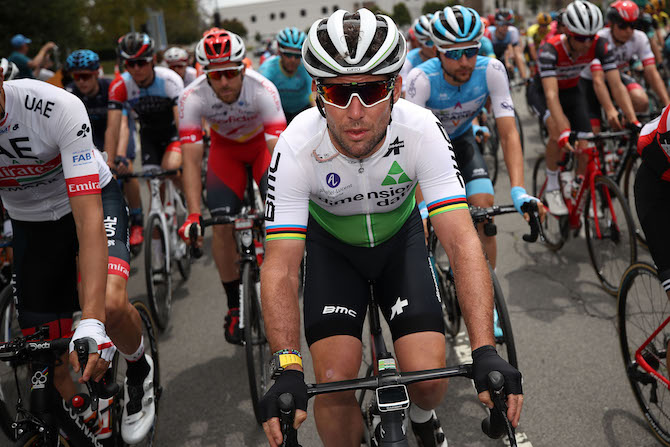
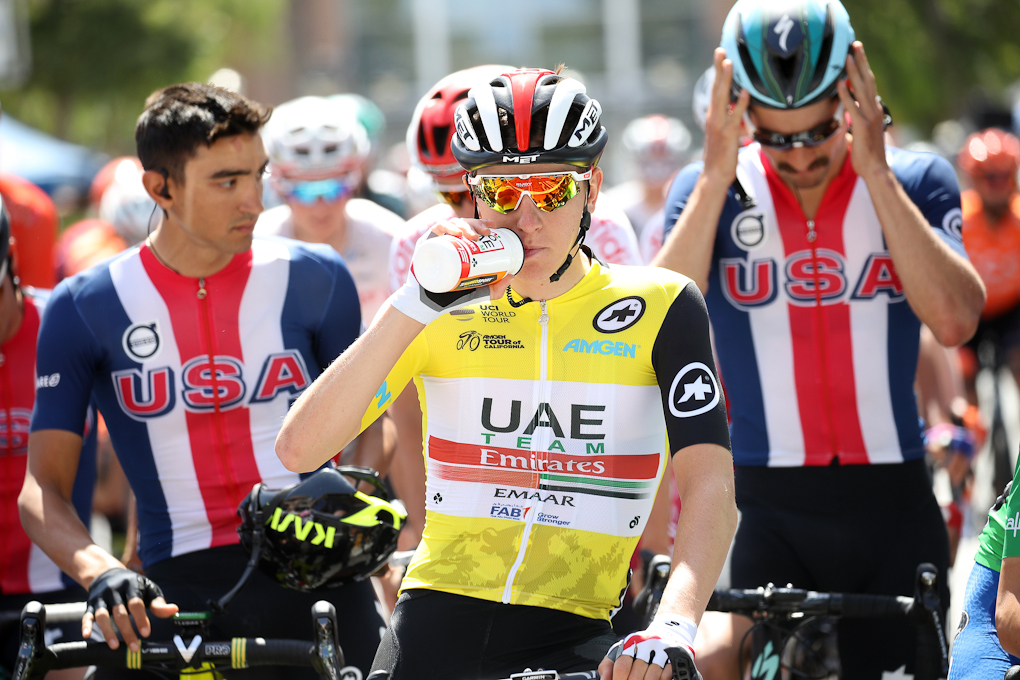
The 2019 Tour of California came to a close last week, with Tadej Pogacar (UAE Team Emirates) leading home a youthful men's podium, while Boels Dolmans dominated the women's competition, taking two stage wins and the overall title with Anna van der Breggen.
50 race tech photos from the Tour of California – Gallery
Van Garderen decision remains controversial with Tour of California peloton
Tour of California Women's Race: Van der Breggen seals overall
Tadej Pogacar: Tour of California was my main goal
Kennedy seals first European victory with solo attack in Durango - Women's News Shorts
The 20-year-old Pogacar took the lead in the men's race on Mt. Baldy and then finished safely in the bunch on the final day to beat Sergio Higuita (EF Education First) and Kasper Asgreen (Deceuninck-QuickStep). Van der Breggen stamped her authority on the women's race early with a stage 1 victory that upset the teams hoping for a sprint finish.
As well as their winners, the two races gave us plenty of talking points, and Cyclingnews has put together a list eight conclusions from the two events.
There are no rules in cycling
There are no rules in cycling; there are only suggestions and guidelines based on circumstances and who’s involved. Once you embrace that obvious-but-rarely stated truth, everything about the jury's decision to give Tejay van Garderen (EF Education First) the same time as the field at the end of stage 4 in Morro Bay makes perfect sense.
Van Garderen and his EF teammates found themselves uncomfortably far from the front on the technical final run-in to Morro Bay. As Deceuninck-QuickStep picked up the pace on the front, van Garderen touched wheels in the bunch and hit the deck with just over seven kilometres to go. After several mishaps delayed his chase, van Garderen and the EF train got up to steam and were gaining ground when they came upon more chaos caused by another crash at 3.2km, just shy of the magical three-kilometre line that is supposed to absolve any time lost to such mishaps. When the provisional results came in, van Garderen lost 51 seconds and had dropped to 13th place behind new race leader Kasper Asgreen (Deceuninck-QuickStep), who finished 10th on the stage won by teammate Fabio Jakobsen. That didn’t stand, however, as confusion reigned in team parking before word started to filter in that officials had revised the results. Van Garderen said he was told he was out of yellow, then back in, then out, then finally back in again.
"I was as confused as everyone else," van Garderen said the next day.
In the end, the jury ruled that the second crash, even though it occurred outside the 3km line, had hindered van Garderen's return to the bunch, and so they awarded him the same time as the winner. "We didn't launch any protest or anything," van Garderen insisted. "We were just waiting on their decision. They just kept changing their mind, but ultimately they ruled in our favour."
The latest race content, interviews, features, reviews and expert buying guides, direct to your inbox!
Oh, to be a fly on the wall of that UCI jury meeting room at the Morro Bay Community Center. There wouldn’t have been any team representatives in the discussion, but people from race owner AEG and race technical director ASO often are. Ultimately, the responsibility fell to the Belgian Philippe Marien, president of the commissaire panel, and fellow jurists Chuck Hodge, Christian Magiera and Andre McCord. Deceuninck-QuickStep were obviously upset with the call, and Astana told Cyclingnews they launched an official protest, not because it would affect the race outcome, but because the ruling was, in their view, completely unjust. Jumbo-Visma’s George Bennett, the 2017 overall winner who would have been one of the GC riders benefiting from the initial results, said he believed the jury knew they made the wrong call.
"I talked to the Belgian guy [Marien]," Bennett told Cyclingnews before the start of the Queen stage to Mt. Baldy. "I think he was a little sheepish about it. He wasn't ready to admit that he was wrong but I think he knew he'd cocked it up."
Not unlike the infamous ‘Leipheimer Rule’, when the 2007 Tour of California jury extended the three-kilometre rule to nearly 10km to cover a crash of then-race leader Levi Leipheimer, there is no legitimate reading or interpretation of the rules as written that would have justified ‘The van Garderen Decision’, until you understand and fully embrace the guiding principle that there are no rules in cycling, only suggestions and guidelines based on circumstances and who’s involved. (PM)
Representatives from Deceuninck-QuickStep and Astana talk with the head UCI official at the Tour of California (Pat Malach)
Another false start for Cavendish
Mark Cavendish’s proclaimed recovery from Epstein-Barr didn’t manifest itself in his performance last week in California. The Manxman started the week at the pre-race press conference saying that he had finally been declared below the threshold for being considered ill for the first time in two years, and he was ready to challenge for wins. That didn’t happen on the pancake-flat first stage in Sacramento, where Cavendish finished 30 seconds off the back in 109th. He struggled to make the time cut on the high-altitude climb to Lake Tahoe, where he was heard yelling at a teammate who dropped back to help him to ‘just leave him alone’. He finished the stage second to last, 36:09 behind the winner.
Cavendish never cracked the top 100 before dropping out of the race during the final stage on the first category 3 climb of the day, which ended with a sprint in Pasadena in front of the Rose Bowl. Cavendish won a similar stage there in 2015, just one of his 146 official career wins. Although he told Cyclingnews the previous day that he felt OK, had been improving throughout the week and would like to challenge for the win again in Pasadena, the opening climb on Angeles Forest Highway proved too much, and he put an end to a lacklustre week.
Cavendish had just 26 race days in his legs coming into California after sub-par performances at Vuelta a San Juan and the UAE Tour, and then abandoning Paris-Nice. The 33-year-old returned to racing at the Tour of Turkey last month and most recently competed in the Tour de Yorkshire, where his best result was eighth on stage 1.
His hopes for climbing a few more steps up the ladder in California never materialised, however, and his un-Cavendish performances continue. It’s concerning that Cavendish says he only recently cleared the threshold for not being considered ill for the Epstein-Barr virus but has attempted several as-yet-unsuccessful comebacks over the two years since he was diagnosed. Cyclists put serious stresses on their bodies, and for them, determining when they’re ‘ready to return to work’ takes a little more care than it would for, say, the average journalist.
The mental image of Cavendish chastising a teammate who’s been sent to help keep him in the race is not a positive one for him or his fans, who like to see the Cavendish who is a patron of the peloton, looking out for fellow riders, talking up races and expressing his passion for the sport he so obviously loves. To paraphrase one of the team directors Cyclingnews spoke with at California concerning the mercurial sprinter: Cavendish needs to take three months off. Go home. Don’t drink any caffeine. Don’t eat any sugar. Don’t exercise. Lay on the sofa and watch TV 12 hours a day. Tinker with his cars. And definitely don’t think about cycling. (PM)
Sometimes less is more
The 2019 Amgen Tour of California featured four of seven stages that were over 200km, more than the previous five editions combined. With an elevated level of climbing again this year, there were a lot of tired riders by the end of the race. The added length led to some long hours in the saddle, with a succession of days on stages 2, 3, 4 and 5 adding up to nearly 24 hours of racing, the longest coming on the stage 2 high-altitude climb to South Lake Tahoe. Deceuninck-QuickStep’s Kasper Asgreen won the stage in 6:17:11, and the race closed in on six hours each of the next two days. A tailwind assist on stage 5 from Pismo Beach to Ventura pushed the peloton to just under five hours, setting up the final GC fight on the climb to Mt. Baldy and a concluding sprint stage around the Rose Bowl in Pasadena.
The California race has always faced the challenge of trying to cover a lot of ground in just a week of racing. The ‘Golden State’ is the third biggest in the US, and the expansive geography means the host cities throughout the race can be spread out. In 2016, when the race travelled from San Diego to Sacramento in just eight stages, complaints about long transfers were rampant. At the post-race press conference that year, ‘King of California’ Peter Sagan complained of being “just all day on the bus.” The transfers have been shorter since, and they were again this year.
"It’s either ride the kilometres or drive them, because we have to get somehow from Sacramento to L.A., and I’d rather ride them," three-time Tour of California stage winner Toms Skujins (Trek-Segafredo) told Cyclingnews before the final stage.
"But at the same time," Skujins added, "obviously, the Morro Bay day, I would say it was a little too much, but also because of what the wind was like. The next day when it was a tailwind we did it in five hours and it was great. It was exciting racing. We had a really strong breakaway going, and we could’ve made it pretty, pretty close to the line if the situation was a little bit different. There’s a time and place for the long days, and I really love the long days, but maybe this year there was just one too many."
Rally UHC Cycling’s Rob Britton, a Tour of California veteran who finished 12th overall this year after losing crucial time on the wind-blown stage 5 run-in to Ventura, also joked about racing the kilometres rather than traversing them in the team bus, but he also questioned whether the longer stages made for better racing.
"They decided to just do the transfers on the bikes instead of in the cars," Britton told Cyclingnews. "Four, five-plus, six-plus hour stages in a row. I don’t think they’ve ever done that before - at least not that I can remember. The weather hasn’t been the best so far all week either, so it’s definitely worn on the riders, myself included."
Cycling is an endurance sport, obviously, and discovering who can ride through the cumulative effects of multiple race days is a crucial part of deciding the winner. But sport is also entertainment, and it can be hard to provide a top-level show for the fans when the legs are tired and the days are long. Some of the stages at this year’s race did drag on.
"Some of the stages were long, and that’s all they were, just long," Britton said. "You could probably get some great pictures on Highway 1 [during stage 4 from Laguna Seca to Morro Bay] and everything, and it was cool finishing in Morgan Hill [stage 3] I guess. Maybe the finish would have been different without the wind, but then you talk to people in the pack and you talk to people at home, like my dad, who has watched a lot of bike races, and he said ‘that was the most boring race I’ve ever seen'.
"For us, we’re riding hard," Britton said, "but it still takes a day like Mt. Hamilton [during stage 3 from Stockton to Morgan Hill], which could have been a GC day, but the way the end was, nothing really came from it, which was a bummer." (PM)
The Tour of California peloton traverses the Golden State's wide-open spaces (Getty)
Rise of the young riders
The 2019 Tour of California was a showcase for young talent. The average age of the seven stage winners, including 29-year-old Peter Sagan (Bora-Hansgrohe) was 23. The average age of the final GC podium, led by 20-year-old overall winner Tadej Pocagar (UAE Team Emirates), Sergio Higuita (EF Education First) and Kasper Asgreen (Deceuninck-QuickStep), was 21.
Although Sagan won the opening sprint in Sacramento, he was unable to add a record 18th stage victory as a slew of younger riders rose to the occasion on difficult courses that featured a level of mid-to-late-stage climbing that normally would have favoured the three-time world champion. After Sacramento, however, Sagan lost out to up-and-coming Dutchman Fabio Jakobsen (Deceuninck-QuickStep) during stage 4 on an uphill finish where Sagan has won before. UAE Team Emirates’ Jasper Philipsen, 21, slipped past Sagan for second place there.
It was Bahrain-Merida’s 23-year-old Spaniard Ivan Garcia Cortina’s turn next, as he took the tricky bloc headwind stage 5 sprint in Ventura. Cees Bol, Team Sunweb’s 23-year-old Dutch sprinter, claimed the final sprint in Pasadena ahead of Sagan and Philipsen.
Elder statesmen Sagan and Tejay van Garderen (EF Education First) kept the yellow jersey company until its final owner appeared in the form of a 20-year-old prodigy from Slovenia. Pogacar rode well beyond his years all week, sticking close to the GC contenders and always staying out of trouble, like finishing ninth in the tricky finish to Ventura on stage 5.
Pogacar was well positioned to pounce on the Queen stage climb to Mt. Baldy, where he rode within himself until it was time to shed his rivals and track down one more rider up the road. He slowly reeled in the final attack from Higuita, then schooled the Colombian through the final switchback, slowing enough to take the quicker inside line after studying the finale on paper beforehand. While their more well-known colleagues grabbed the headlines at the Giro d’Italia across the Atlantic, a host of promising young riders in the Golden State staked their own claims to the future. (PM)
Tour of California Women’s Race faces equality complaints
Last year, the organisers of the Tour of California were applauded for offering equal prize money for the three days of racing and doing away with the dated 'podium kiss' tradition during award ceremonies. This year, organisers faced a group advocating for Caltrans to re-write its roadway permits to force equal race days for men’s and women’s events, and they were heavily criticised for not offering adequate TV coverage of the women’s race.
The Tour of California men’s race has always been a week-long event this year held from May 12-18. The women’s race started as a one-day criterium before adding a separate invitational time trial, and then becoming a stage race in 2015. This year it was a three-day event held from May 16-18.
Kathryn Bertine has teamed up with the Committee for Equity in Women’s Surfing (CEWS) co-founder Sabrina Brennan to attempt to amend/close the loopholes in California Assembly Bill 467, which focuses on paying women and men equally in competitions on California state land. But the bill still allows the exclusion of women from competitions on state roadways and state land and is silent on equal racing days. In the meantime, Brennan, who is also the founder of Sport Equity, has sent a letter to the Director of Caltrans asking the state agency to update its permit requirements to reflect equal access to roadways.
Cyclingnews asked Kristin Klein, president of Amgen Tour of California and executive vice president at AEG Sports, how such permitting changes would affect the race but she said that it was hard to comment at this time. "We will need to cross that bridge when we get to it. There are just too many variables in terms of the production of a bike race of this magnitude with all the different agencies that we work through, all the various permits that are required. There are so many different variables." (KF)
Anna van der Breggen, Katie Hall and Ashleigh Moolman-Pasio wait backstage at the Tour of California podium (Getty)
Boels Dolmans live up to expectations and dominate first-ever summit to Mt. Baldy
Katie Hall was ecstatic when the organisers of the Tour of California announced last December that a summit finish to Mt. Baldy would be included in the women’s race during the 2019 edition. And when Boels Dolmans lined up with the two previous overall winners in defending champion Hall and 2017 champion Anna van der Breggen, all fingers pointed to these two riders dominating the race.
They lived up to every expectation during the demanding three-day race held from May 16-18. Van der Breggen won the opening stage into Ventura and took the overall lead, which she held through the following two stages and secured her second overall title. Hall followed the pre-race script to perfection with a victory atop Mt. Baldy in front of her family and friends. She had Van der Breggen’s support in winning the stage but they both crossed the line side-by-side, while Ashleigh Moolman-Pasio (CCC-Liv) finished a close third place.
During the 2017 edition, van der Breggen only won the race by one second ahead of Hall. Van der Breggen said she was happy to have a teammate in Hall this time around, and someone who could challenge stages on home soil.
"It is special to have Katie on our team," Van der Breggen said. "Two years earlier we were fighting against each other here and I only beat her by one second. One year you’re fighting against each other and the next year you work together and that is the nice thing about cycling. In this race, Katie is a great teammate and it’s so much fun to have her in the team." (KF)
Fewer chances for sprinters
The Tour of California used to be one of the biggest attractions for world-class sprinters because it notoriously offered sprint opportunities through circuit finishes and flatter stages; sprint aces like Peter Sagan, Mark Cavendish, Alexander Kristoff and Marcel Kittel have all won stages in California. This year’s edition was one of the most challenging in the 14-year history of the Tour of California. The route covered almost 21,000 metres of elevation gain, with 25 categorised ascents, along with a summit finish on Mt. Baldy. In addition, there were four stages over 200km.
In the pre-race press conference, Mark Cavendish (Dimension Data) said the only clear opportunity for this sprinters this year was on stage 1 into Sacramento. Bora-Hansgrohe’s Peter Sagan secured his 17th stage victory at the Tour of California in that stage and moved into the first leader’s jersey. The racing played out in favour of the sprinters on certain other stages, however; on stage 4 in Morro Bay won by Fabio Jakobsen (Deceuninck-QuickStep), stage 5 in Ventura won by Ivan Cortina (Bahrain-Merida), and stage 7 in Pasadena, but they weren’t as straight forward, and the stages included significant amounts of climbing. (KF)
Cees Bol wins the final stage at the 2019 Tour of California (Getty)
USA Cycling earn their spot in California
The Tour of California’s move to become a WorldTour-level event has meant that it can no longer invite the Continental level teams, which provides less opportunity for development riders to gain experience in top-tier races. This year, however, USA Cycling fielded a national team that raced above and beyond what was expected of them in the seven-day race.
The team included Travis McCabe – a seasoned sprinter on the American circuit racing for Floyd's Pro Cycling – along with Aevolo's Tyler Stites, Michael Hernandez and Alex Hoehn, all 21, and Keegan Swirbul (also Floyd's Pro Cycling), Sam Boardman (Wildlife-Generation-Maxxis) and Miguel Bryon (Arapahoe-Hincapie) all under 24. Retired pros Mike Sayers and Mike Creed directed the team.
They were active in the race from stage 1, when Stites rode in the breakaway and took the early lead in the young rider classification, and McCabe sprinted for second place behind Sagan in Sacramento and wore the sprinters jersey on stage2. Hoehn was involved in the stage 3 breakaway and earned the mountain classification jersey for that effort. Hernandez was part of the stage 4 breakaway and earned the Amgen Breakaway from Cancer Most Courageous Rider jersey. Hoehn was in the breakaway again during stages 6 and 7 and he secured the final Most Courageous jersey. Throughout the seven-day race, USA Cycling riders were in almost every major break, totalling more than 22-and-a-half hours in the breakaway, more than five hours longer than any other team.
"The dynamic at the Tour of California is always tricky," said team assistant director Mike Creed. "Sometimes it’s a lot of sprinters’ teams, so it’s super controlled. Sometimes it’s like now, where it’s all GC, so it’s not so controlled. You kind of have your hopes, but you’re also trying to tell the guys to differentiate between realistic goals and ambitious hopes. We made realistic goals, and I think we actually got our hopes." (KF)
Hear from former cyclist and human rights activist Kristen Worley on gender verification testing, testosterone, old ideologies and human rights in the latest Cyclingnews Podcast Women's Edition.
Growing up in Missoula, Montana, Pat competed in his first bike race in 1985 at Flathead Lake. He studied English and journalism at the University of Oregon and has covered North American cycling extensively since 2009, as well as racing and teams in Europe and South America. Pat currently lives in the US outside of Portland, Oregon, with his imaginary dog Rusty.
